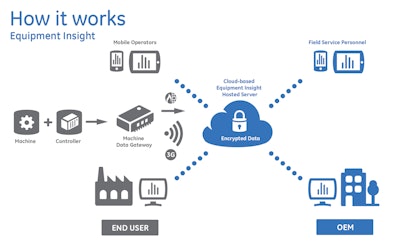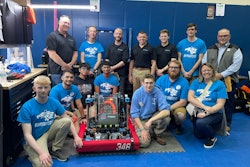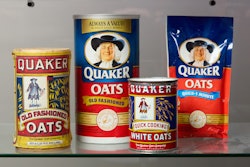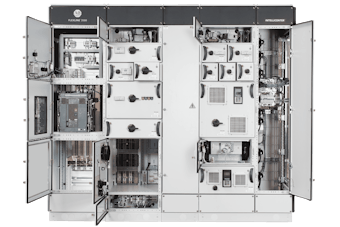
While remote monitoring and control operations have become increasingly commonplace in the packaging and process industries, it’s still somewhat astonishing to think that the technology has been around for decades. It has existed since at least 1982, when four graduate students from Carnegie Mellon’s School of Computer Science connected a Coca-Cola vending machine to the Internet. Each one specialized in one of the necessary component technologies to accomplish this groundbreaking task: server software, user software, hardware, and interfacing. The end game was simple—to see if the machine had product in it and if that product was cold, without leaving their desks. We’ve come a long way since popping the top that bottle.
“Today’s technologies allow connectivity without the collaboration of multiple, highly trained specialists,” notes Mark Ruberg, director of corporate business collaboration at Loveland, Ohio-based Pro Mach, Inc. “Remote monitoring has found its way into everything from patient care to industrial manufacturing. The intersections of documented value creation and accessible technology have resulted in an explosion of quantifiable benefits.”
It’s clear that this intersection will further accelerate the adoption of remote monitoring and control technology, which has substantially increased in demand in recent years.
According to Brent McDonald, CEO of New Brunswick, Canada-based Xiplinx Technologies Ltd., the reasons for this increase have less to do with market pressures that require more remote monitoring, and more to do with savvy
technical employees.
“Before Web-connected control systems or the advent of modern mobile devices, a CPG had to rely on a dated human machine interface, difficult-to-use software, and a series of paper worksheets to gather intelligence—all of which typically required a significant amount of training to interpret,” says McDonald. “A variety of hardware and software systems evolved, leveraging the Internet to stream data to a personal computer. But, legacy-installed bases of equipment historically made this extremely difficult to do. This trend continues today.”
Yet the trend is changing with the advent of cloud-based technology. According to Steve Pavlosky, equipment insight business leader at GE Intelligent Platforms, maturing technologies and the cloud are driving down the cost of solutions, so that smaller and mid-sized OEMs can take advantage of technology that used to be outside their reach.
The early adopters of remote monitoring and control operations technology were billion-dollar companies (e.g., GE, Caterpillar, Siemens) that leveraged it to deliver improved asset performance for their customers.
But the emergence of the cloud and Web-based applications have leveled this playing field. Whereas before deployment costs (i.e., licensing, servers, server deployment) were a risk, now systems can be configured for customers without those costs. What once was a significant capital expense is fast becoming an operating expense, and in doing so extending the reach of the technology.
“Over the last 10 years, advances with respect to mobile, wireless, and cellular technology, batteries, and data storage—including cloud-based storage—have completely changed the landscape for remote monitoring and operation,” notes MacDonald.
The benefits of this new landscape are considerable, regardless of company size. They include:
- Increasing revenue streams or enabling new revenue streams (e.g., realizing service entitlement)
- Improving asset performance and uptime
- Risk reduction by meeting performance guarantees through live monitoring
- Improving user experience by providing proactive access to data, improving collaboration and the interaction between OEMs and users, and supporting end-user efforts to operate leaner.
Features and functionality
Current systems cover a range of remote monitoring and control operations solutions. For those employing discrete, cloud-based systems, you can expect:
- Dashboard features that stream real-time performance data for review.
- Alert features for immediate notification about potential issues.
- Reporting engines that enable work with data outside the software system.
- Configuration tools for system setup and modification for users with permission to configure the system.
- Secure data collection independent of the control system.
- Data historian
- Predictive analytics
- Visibility of data across networks
- Workflows (e.g., electronic SOPs)
Ajay S. Rana, business developer, packaging industry at Siemens, notes that most controllers today have integrated Web servers that facilitate the ability to customize remote solutions. An engineer can design pages and link variables into the controller, effectively searching data to get status in a targeted, granular way, only pulling data that
is needed.
“You don’t have to be a fully blown programmer to make customizations,” says Rana. “You just need basic Internet skills to configure. Pages can be designed for an operator or a plant engineer.”
For example, when a plant engineer receives a call at night, he or she can look at the status and force inputs or outputs to verify the process, all without the need for the software installed on the user system.
Security and scalability
Pavlosky looks at several aspects of security. First is security of the data collection: encrypting the data at the device level. Second, most current users want private cloud implementation. They don’t want any possibility of data co-mingling in a public cloud, though over time, this attitude is likely to change as confidence in—and utilization of—public clouds increases.
The third aspect is user access—controlling who can see the data, and what data can be seen.
“The way systems have been designed, the software provider delivers basic security,” says Rana. “A higher level of security can be added, with the OEM and users determining the level of security they see as requisite.”
For both on-premise and cloud-based applications, modern platforms are cost-effectively scalable— a core benefit of the cloud. In the past, a selection of servers was needed, and one would have to live with that selection for any number of years. Now it’s simple to add computing or storage resources to a customer deployment via the cloud.
“The most common stability issues we see are asset hierarchies within a system, and completely non-scalable deployment, service, and account management approaches,” says MacDonald. “Buyers of remote monitoring and operating platforms will first want to understand whether or not an asset hierarchy can be constructed so that meaningful, granular data can be extracted from the system.”
Pavlosky points to several issues that OEMs should address before undertaking remote monitoring and control operations:
Find a solution that can talk to a variety of control platforms. This is particularly critical in the industrial sector.
Ensure scalability without a major reinvestment in technology.
Look closely at business drivers (e.g., CAPEX vs. OPEX, on-premise vs. hosted). These drivers will vary depending on industry sector.
“Finally, you need to know you’re ready as an organization,” he says. “Leadership buying in is one thing, but it has to extend to execution at all levels to get value. Values can be huge, but organizations have to organize around capturing the value.”
Future evolution— or revolution?
How will things will change in the coming years? MacDonald’s prediction may sound quite familiar.
“Most remote monitoring systems have powerful back ends capable of collecting and disseminating large volumes of data,” he says. “Over the next five years, we’ll continue to see mobile and wearable technology converge with non-discrete and discrete remote monitoring and operating systems. Technical employees will retrieve data in new and interesting ways, and the experience of supervisors and management, who must interpret and respond to the data, will instead deal with streamlined, actionable intelligence in real time.”
The Industrial Internet of Things, MacDonald adds, “has arrived in a big way, and remote monitoring and operating are exciting elements of it. In today’s globally competitive environment, where trade barriers are being lowered, understanding and incorporating this development into one’s strategy is a must.”
Rana sees a potentially more dramatic development.
“The next thing will be no automation software,” he says. “Everything will be designed for Web-based applications. All controllers will have a Web-based platform you can use for anything, but how it will be programmed will be left up to the user. Individual control platforms will become a thing of the past, replaced by a standard platform for all machines. In five to 10 years, traditional automation software as we know it now could go away.”















